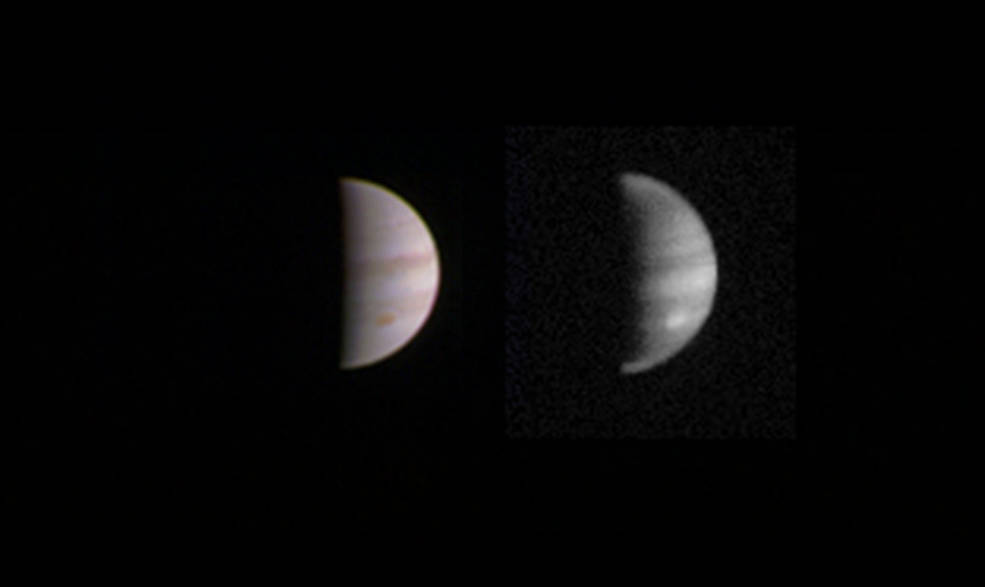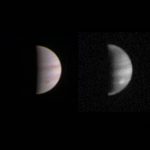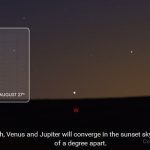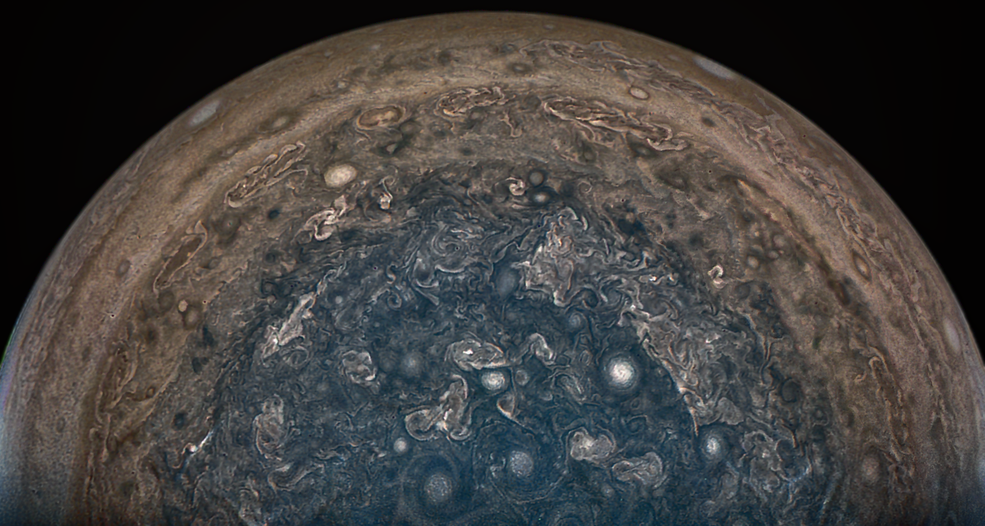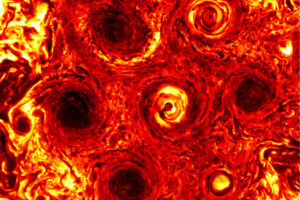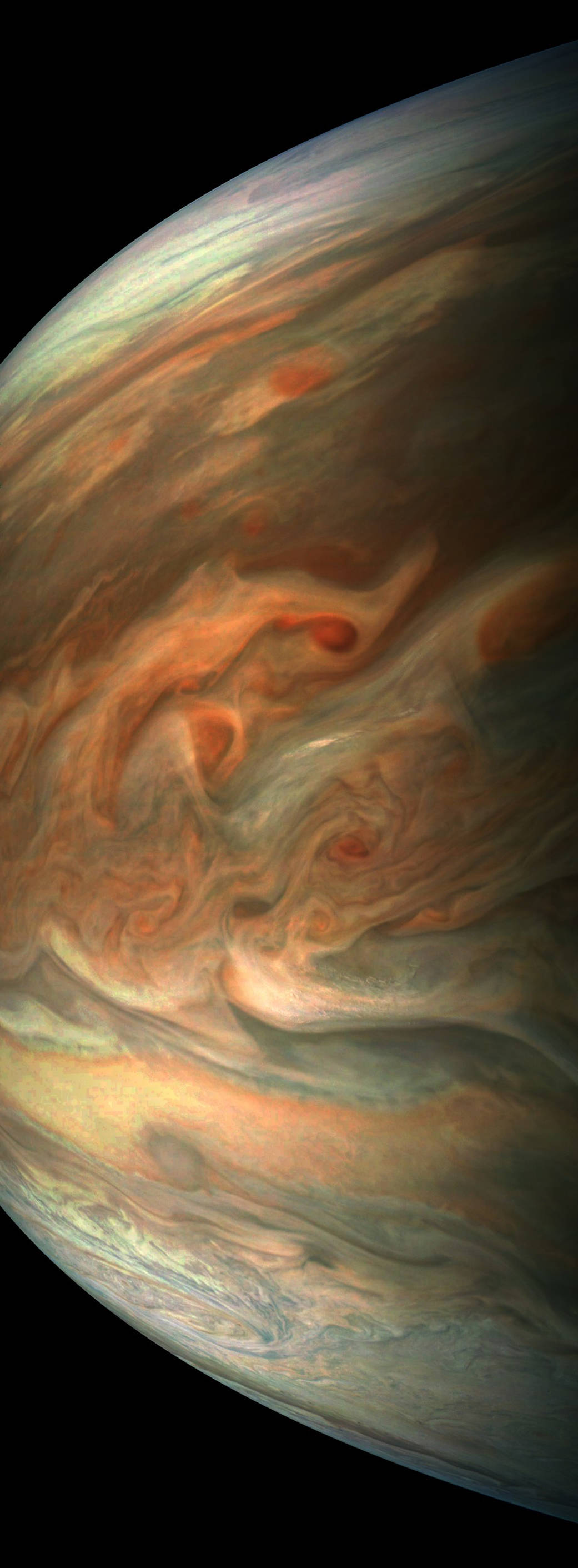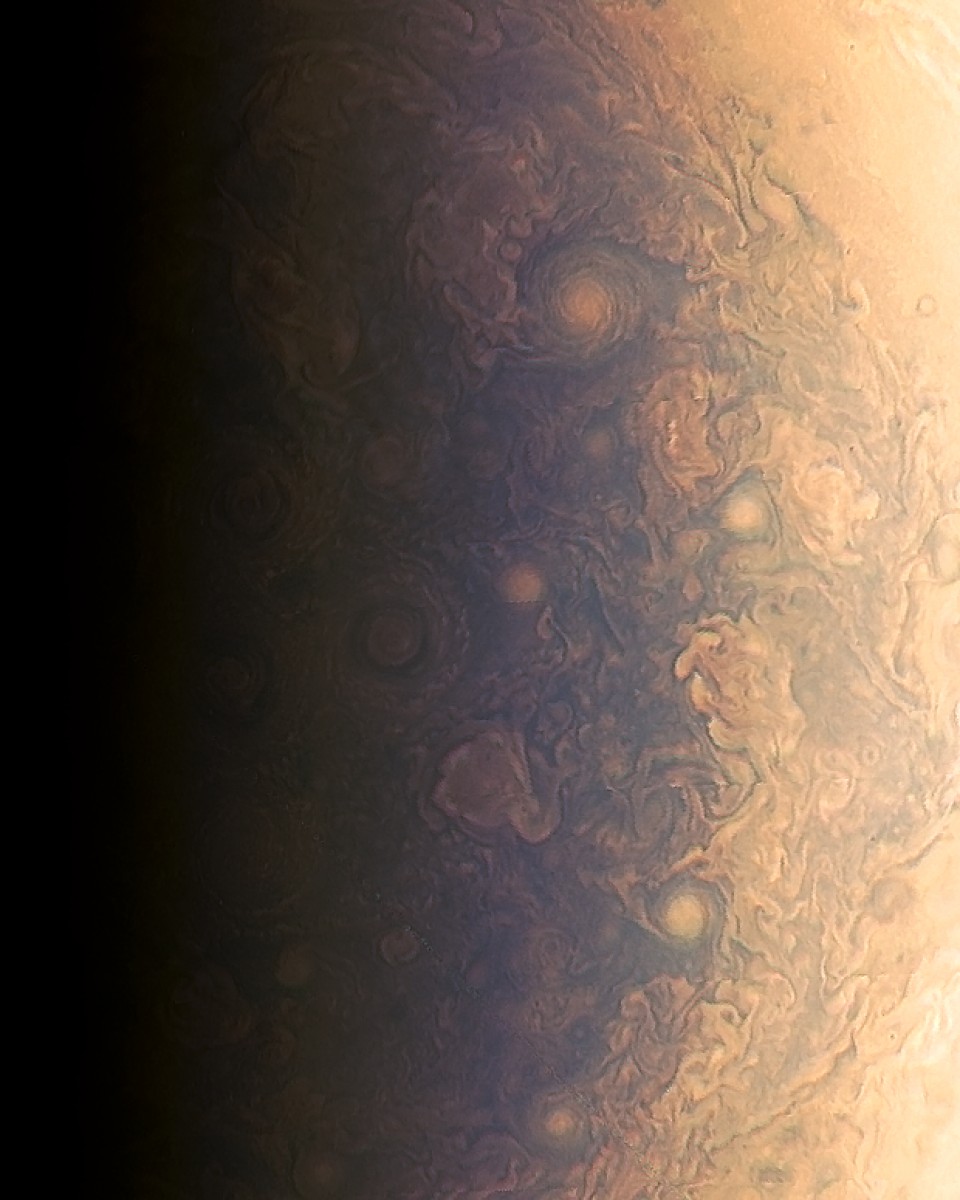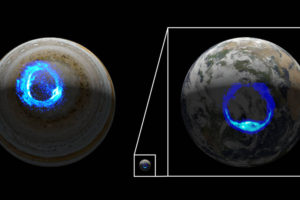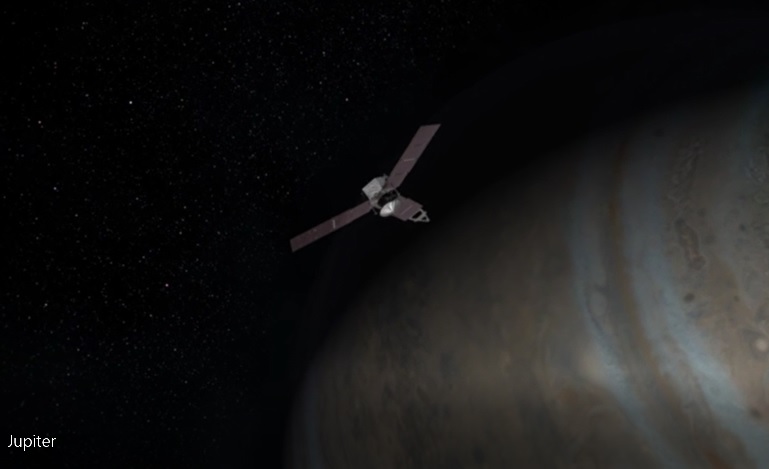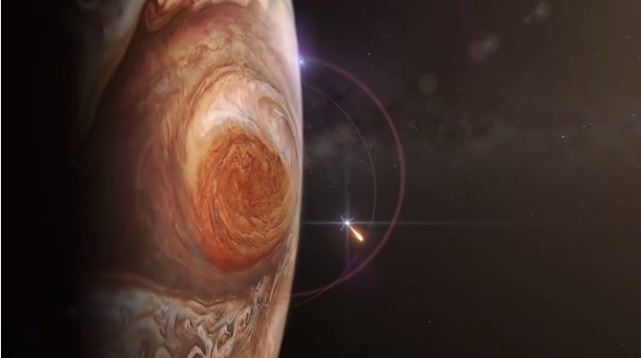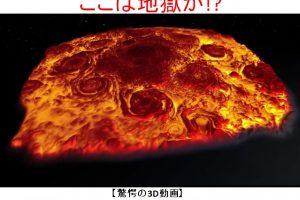オリジナルNASA記事URL:NASA’s Juno to Soar Closest to Jupiter This Saturday
This dual view of Jupiter was taken on August 23, when NASA’s Juno spacecraft was 2.8 million miles (4.4 million kilometers) from the gas giant planet on the inbound leg of its initial 53.5-day capture orbit.
Credits: NASA/JPL-Caltech/SwRI/MSSS
Full image and caption
NASAの木星探査機ジュノーが、今週の土曜日に木星に最接近します
木星のこの2つの画像は、NASAの木星探査機ジュノーが、8月23日に巨大ガス惑星(木星)の最初の53.5日周期の軌道上から、280万マイル(440万キロ)の地点で撮影したものです。
訳者注
いよいよ2016年8月27日のNASAの木星探査機ジュノーの、木星再接近が近づきました。
今回は、ジュノーにとっては再接近でもあるのですが、今までどの探査機よりも木星に近づくことになるので、最接近でもあります。
それに伴い、待ち焦がれていました最新の木星撮影画像が、ついに公開され始めました。
NASAでは、本格的な最新画像の公開は来週後半になるのではないかと伝えています。
本日公開されている画像には2つの木星の画像なのですが、NASAの記事には説明がありませんでしたが、ジェット研究所のサイトに説明がありました。
JPL-Caltech:Jupiter From 2.8 Million Miles
The image on the left is a color composite taken with Junocam’s visible red, green, and blue filters. The image on the right was also taken by JunoCam, but uses the camera’s infrared filter, which is sensitive to the abundance of methane in the atmosphere. Bright features like the planet’s Great Red Spot are higher in the atmosphere, and so have less of their light absorbed by the methane.
左の画像はジュノーカムの可視光、赤色、緑色、青色のフィルタで撮影したカラー合成画像です。右の画像もジュノーカムで撮影したものですが、大気中のメタンの量がわかる赤外線フィルタを使用して撮影しています。木星の大赤斑のように、大気の中でもひときわ明るいところは、より高度が高く、メタンによって光が吸収されることが少ないのです。
